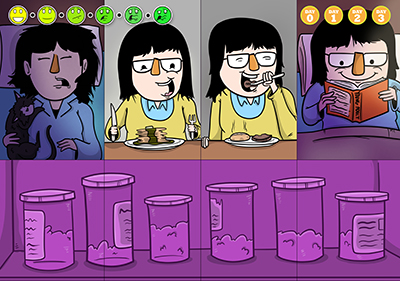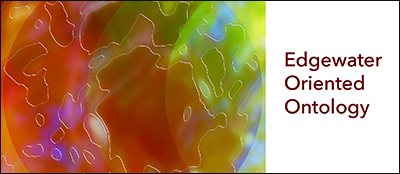The Interdisciplinary Arts Department is delighted to announce four students have been granted the 2015 Albert P. Weisman Award. Each student will receive $2000 to finish a project that is already underway. This year, of the four InterArts students awarded, two are Media MFA students (2nd-year BJ Allen and thesis-year Adrienne Ciskey), and two are Book & Paper MFA students (thesis-year Grayson Bagwell and 2nd-year Hannah Batsel). We look forward to seeing these projects coming to fruition in the coming months! The students will all be exhibiting their work in the Weisman Exhibition, September 8 through October 16, 2015.
BJ Allen’s project is a solo exhibition, Edgewater Oriented Ontology, that will be on display in Columbia’s C33 Gallery April 2-17 in 2015. She uses ambient sound, abstract video, and sculptural objects to portray a unique emotional and philosophical journey grounded in the Edgewater neighborhood of Chicago. The exhibition consists of two site-specific installations and several additional works that use new technologies to bring to light rich layers of meaning found in one’s immediate surroundings. Inspired by the fluid definitions observed in Object Oriented Ontology, Allen relates disparate concepts such as refuge, grief, physics, and technological mediation to form a colorful, meditative whole.
ProtoType, an exhibition created by Grayson Hugh Bagwell, is a series of digital and physical objects that investigate the ways in which we digest text through various forms of media. For example, Bagwell is producing digital handheld chapbooks as a means of revealing the diligence and intimacy involved in their creation, as well as a book that searches the Internet for consistent stream of content. Alongside these objects, there will be a myriad of his most experimental works in order to reveal the extent to which one must go to create a coded art piece.

Hannah Bastel’s project is a screen-printed edition of fifty artist books entitled “Maneater,” a set of four distinct but interrelated storybooks that nestle within one another like Russian nesting dolls. The four stories can be read individually, but when taken as a whole, reveal the complex effects of colonialist greed and exploitation across generations. The layouts are highly illustrative, after the fashion of turn-of-the-century adventure novel covers, and the text is hand-drawn. As the nested books get smaller and smaller, the story goes backwards chronologically; by the time readers reach the smallest innermost book, they will have learned the history of each character. Batsel’s project encourages readers to draw connections between historical exploitation of native peoples and the social power structures still in place today.

Adrienne Ciskey’s Project, Bitter Pills:
Your body aches. Your head feels like it is going to explode. You are tired, but you can’t sleep. And every day, you have to painstakingly stick to a schedule, just to take pills to mitigate some of these symptoms. You are living with a chronic invisible illness. Bitter Pills is a board game about this experience, where you manage your medications and deal with the symptoms of hypothyroidism and polycystic ovary syndrome. Chronic illnesses are often hard to talk about, and in the case of invisible illness, there’s no outward symptoms for others to see. By playing Bitter Pills, sufferers are given a way to discuss chronic illness with others through a less complicated language than the usual medical terminology.


